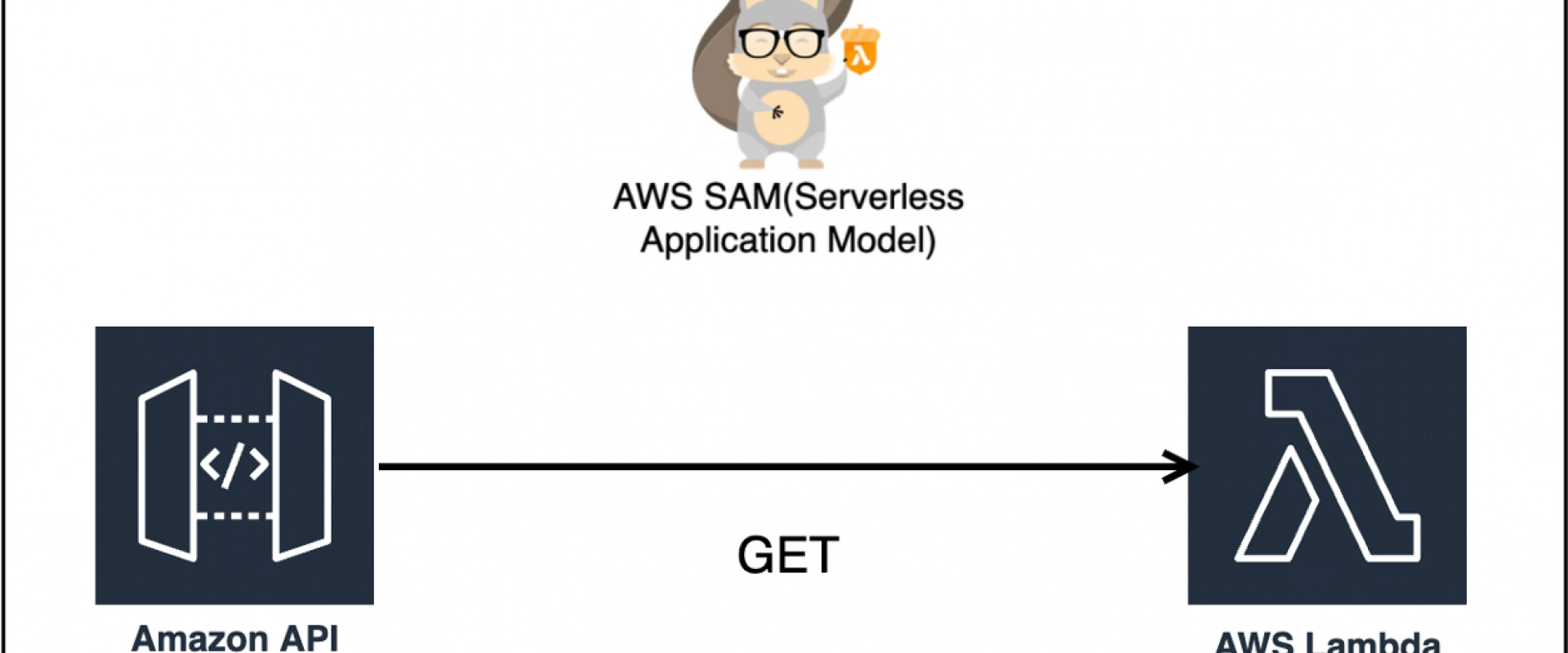Building a Serverless Application on AWS With AWS SAM

Learn how to define AWS resources like Lambda functions, SQS queues, and SNS topics, set up event triggers, create IAM roles, and deploy the SAM application effortlessly.
Welcome to this step-by-step guide on building a serverless application on AWS using AWS SAM (Serverless Application Model). In this tutorial, we will walk you through the process of defining and managing AWS resources, such as AWS Lambda functions, SQS queues, and SNS topics, using SAM template model code. Additionally, we'll set up an event trigger for the Lambda function using the SQS queue, create a new IAM role with the necessary permissions, and deploy the SAM application to AWS.
Prerequisites
Before we begin, make sure you have the following prerequisites in place:
- Python: Ensure you have Python installed on your computer. You can download it from the official Python website.
- An AWS Account: If you don't have one, sign up for an AWS account.
- AWS CLI: Install the AWS Command Line Interface on your computer to interact with AWS services from your terminal.
- AWS SAM CLI: Install the AWS SAM CLI, which provides additional tools for managing serverless applications.
Step-by-Step Walkthrough
1. Create a new directory for your SAM application.
Shell
mkdir MySAMApp
cd MySAMApp
2. Create a new file named "template.yaml" within the "MySAMApp" directory. This file will contain the SAM template model code.
3. Let's go through the SAM template and understand each section:
YAML
AWSTemplateFormatVersion: '2010-09-09'
Transform: 'AWS::Serverless-2016-10-31'
Description: My Serverless Application
-
The
AWSTemplateFormatVersionspecifies the version of the CloudFormation template format we are using. It's set to '2010-09-09' here. -
The
Transformsection indicates the macro or template name that CloudFormation should use to process this template. We're using the 'AWS::Serverless-2016-10-31' transform, which is specific to SAM templates. -
The
Descriptionis optional and provides a brief description of the template.
Next, we define our AWS resources:
YAML
Resources:
MyLambdaFunction:
Type: 'AWS::Serverless::Function'
Properties:
CodeUri: my-lambda/
Handler: app.lambda_handler
Runtime: python3.8
Events:
MyApi:
Type: Api
Properties:
Path: /my-api
Method: GET
-
We
define an AWS Lambda function named
MyLambdaFunction. TheAWS::Serverless::Functiontype is specific to SAM and simplifies the creation of Lambda functions. -
The
CodeUrispecifies the path to the folder containing the Lambda function code, which we'll create shortly. -
The
Handlerindicates the entry point of our Lambda function, which is thelambda_handlerfunction defined in the "app.py" file. -
Runtimespecifies the programming language runtime for the Lambda function, in this case, Python 3.8. -
Under
Events, we create an API Gateway event trigger namedMyApi, which listens for HTTP GET requests on the "/my-api" endpoint.
Next, we define an SQS queue and an SNS topic:
YAML
MySqsQueue:
Type: 'AWS::SQS::Queue'
Properties:
QueueName: my-sqs-queue
MySnsTopic:
Type: 'AWS::SNS::Topic'
Properties:
DisplayName: MySnsTopic
TopicName: my-sns-topic
-
The
MySqsQueueis an AWS SQS queue created using theAWS::SQS::Queueresource type. We set theQueueNameto "my-sqs-queue." -
The
MySnsTopicis an AWS SNS topic created using theAWS::SNS::Topicresource type. We set theDisplayNameto "MySnsTopic" and thenTopicNameto "my-sns-topic."
Next, we create an event source mapping between the SQS queue and the Lambda function:
YAML
MySqsQueueEvent:
Type: 'AWS::Lambda::EventSourceMapping'
Properties:
BatchSize: 1
EventSourceArn:
Fn::GetAtt: [MySqsQueue, Arn]
FunctionName:
Ref: MyLambdaFunction
-
The
MySqsQueueEventis an AWS Lambda event source mapping created using theAWS::Lambda::EventSourceMappingresource type. -
We
set
BatchSizeto 1, indicating that one message at a time will trigger the Lambda function. -
The
EventSourceArnis set to the ARN (Amazon Resource Name) of the SQS queue we defined earlier. -
The
FunctionNameis set to the logical ID of the Lambda function resource (MyLambdaFunction) using theReffunction.
Finally, we create a new IAM role for our Lambda function:
YAML
MyLambdaRole:
Type: 'AWS::IAM::Role'
Properties:
RoleName: my-lambda-role
AssumeRolePolicyDocument:
Version: '2012-10-17'
Statement:
- Effect: Allow
Principal:
Service: lambda.amazonaws.com
Action: 'sts:AssumeRole'
ManagedPolicyArns:
- 'arn:aws:iam::aws:policy/AmazonS3FullAccess'
- 'arn:aws:iam::aws:policy/AmazonSQSFullAccess'
- 'arn:aws:iam::aws:policy/AmazonSNSFullAccess'
-
The
MyLambdaRoleis an AWS IAM role created using theAWS::IAM::Roleresource type. This role grants permissions to the Lambda function. -
We
specify the
RoleNameas "my-lambda-role." -
The
AssumeRolePolicyDocumentallows the Lambda service to assume this role and execute our function. We grant this permission tolambda.amazonaws.com. -
Under
ManagedPolicyArns, we attach managed policies that provide full access to Amazon S3, SQS, and SNS. Be cautious when using such broad permissions in a production environment.
4. Create a new directory named "my-lambda" within the "MySAMApp" directory. This directory will hold the Lambda function code.
5. Create a new file named "app.py" inside the "my-lambda" directory. This file contains the Lambda function code.
Python
import json
def lambda_handler(event, context):
for record in event['Records']:
# Process the received message from the SQS queue
message_body = record['body']
print(f"Received message: {message_body}")
return {
'statusCode': 200,
'body': json.dumps('Hello from AWS Lambda!')
}
-
The
lambda_handlerfunction is the entry point for our Lambda function. -
It
receives an
eventandcontextas input parameters. - The function processes each message received from the SQS queue and prints the message body.
- It returns a response with a status code of 200 and a simple JSON message, "Hello from AWS Lambda!".
6. Build and package the SAM application:
Shell
sam build
7. Deploy the SAM application to AWS:
Shell
sam deploy --guided
Follow the prompts during the deployment process. You will be asked to provide parameters such as the AWS Region, Stack Name, and other configuration details.
Conclusion
Congratulations! You've successfully created AWS Lambda functions, SQS queues, and SNS topics using the AWS SAM template model code. Additionally, you set up an event trigger for the Lambda function using the SQS queue, created a new IAM role with the necessary permissions, and deployed the SAM application to AWS.
We Provide consulting, implementation, and management services on DevOps, DevSecOps, DataOps, Cloud, Automated Ops, Microservices, Infrastructure, and Security
Services offered by us: https://www.zippyops.com/services
Our Products: https://www.zippyops.com/products
Our Solutions: https://www.zippyops.com/solutions
For Demo, videos check out YouTube Playlist: https://www.youtube.com/watch?v=4FYvPooN_Tg&list=PLCJ3JpanNyCfXlHahZhYgJH9-rV6ouPro
If this seems interesting, please email us at sales@zippyops.com for a call.
Relevant Blogs:
Recent Comments
No comments
Leave a Comment
We will be happy to hear what you think about this post